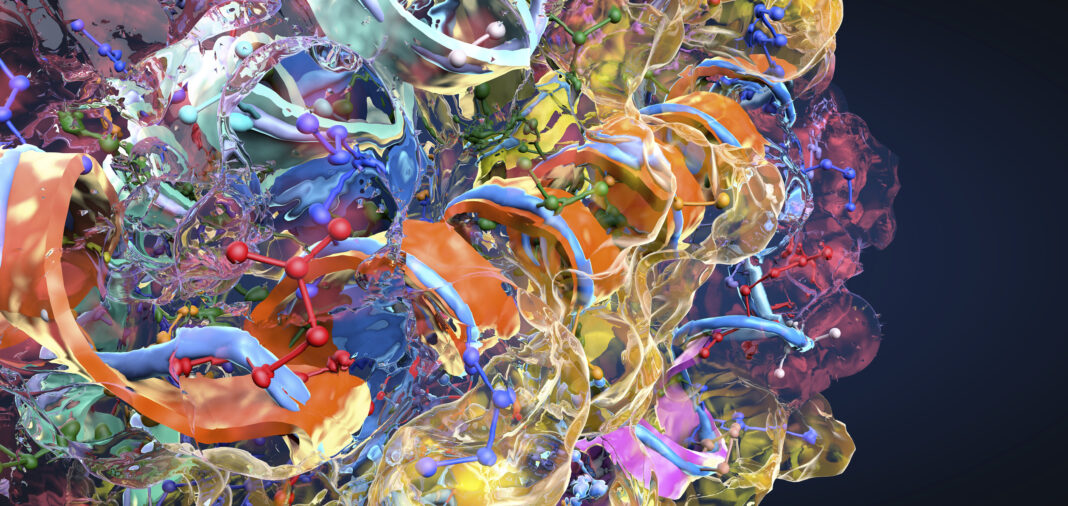Scientists have developed a novel approach to modifying enzymes to improve functionality. They designed a new algorithm to make multiple changes to an enzyme sequence at once as compared to the current model of introducing one or a few small changes at a time. The paper, published by a multinational team at the Broad Institute, Harvard Medical School, and Trinity College Dublin in Nature Communications is titled, “Simultaneous enhancement of multiple functional properties using evolution-informed protein design.”
“The work has wide-ranging applications in industry, in processes that require enzymes for food production, plastic-degrading enzymes, and those relevant to human health and disease, so we are quite excited for the future possibilities,” said Eve Napier, a doctoral student at Trinity College Dublin.
“Beta-lactamase has been well studied in the past and changes in its sequence to optimize function have been difficult to attain. Therefore, it provided a good test for the new strategy for enzyme design. There were also technical reasons—predicted enzyme variants could be tested very rapidly,” Amir Khan, PhD, associate professor, Trinity College Dublin told GEN.
The algorithm incorporates the evolutionary history of the enzyme and identifies where mutations can improve functionality. Focusing on beta-lactamase, an enzyme involved in antibiotic resistance in bacteria, the research team used the algorithm to create computationally-designed versions of the enzyme leveraging not only the primary sequences of beta-lactamase, but also information about protein structure and functional properties to predict the effects of mutations on the 3D structure and functionality of the modified protein.
Khan shared some of the process with GEN: “The algorithm and overall strategy is under continual development. Machine learning software to predict 3-D structures, such as AlphaFold, use evolutionary information at the heart of their algorithms. However, enzyme function is complex, since it involves 3D shape changes during catalysis.”
“At the heart of this new algorithm is a scoring function that exploits thousands of sequences of beta-lactamase from many diverse organisms. Instead of a few random changes, up to 84 mutations over a sequence of 280 were generated to enhance functional performance,” said Khan.
The designed enzymes were synthesized and inserted into E.coli to test functionality, stability, thermosensitivity, and 3D structure. Of the 14 computationally designed proteins, 11 were experimentally shown to be functional (conferring antibiotic resistance to transformed cells) and “strikingly, the newly designed enzymes had both improved activity and stability at higher temperatures,” shared Khan. This includes one variant with 30% of its primary amino acid sequence having been mutated. “Perhaps one of the most interesting results is the joint optimization of both stability and activity, which has often been viewed as an inherent tradeoff in the protein engineering literature,” wrote the authors.
Further, examination of the 3D structure of the enzymes using X-ray crystallography showed that the modified enzymes had a nearly identical structure to wild-type beta-lactamase. Napier stated, “Overall, these studies reveal that proteins can be engineered for improved activity by dramatic ‘jumps’ into new sequence space.”
This study underscores the efficacy of evolutionary models in guiding large sequence alterations to generate functional diversity for protein design applications. Modifying enzymes or proteins while retaining functionality has been a major challenge. Often, multiple mutations or modifications to the primary structure of the enzyme have significant and destructive consequences to the 3D structure and functionality of the resulting enzyme. New methods to leverage the known information and predict the structure and function of designer proteins are necessary for progressing efficiently in protein modification studies.
Khan concluded, “Studies are underway to apply the design strategy to enzymes important to industry. One of the challenges is to extract sufficient information from evolution—there were thousands of sequences available for beta-lactamases from many diverse organisms. Other enzymes may have fewer sequences available. Another challenge is technical—developing rapid assays for enzyme performance. Although the algorithm predicts improved performance, this must be experimentally shown before resources are directed to new variants.”



